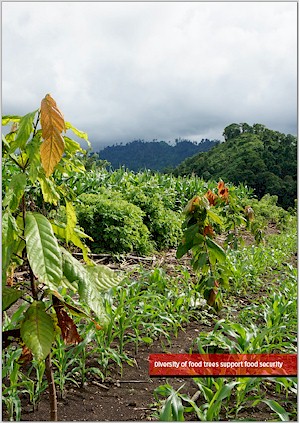| Book Chapter |
 |
|
| Title | Tree diversity as basis of agroforestry | | Author | Meine van Noordwijk, Subekti Rahayu, Aster Gebrekirstos, Roeland Kindt, Hesti L. Tata, Alice Muchugi, Jenny C Ordonnez and Jianchu Xu | | Editors | Meine van Noordwijk | | Year | 2019 | | Book Title | Sustainable development through trees on farms: agroforestry in its fifth decade | | Pages | 17-44 | | Call Number | BC00467-19 |
|
| Abstract: |
Trees and forest relate to each other like eggs and chicken, and it is not possible to say which came first. Trees wouldn’t grow as tall as they do without forest neighbours, and forests without trees exist only on paper and in a policy sense. From an agricultural perspective the trees are the most distinctive aspect of agroforestry, and similarity with forests is a secondary concept, however
In reviewing four decades of agroforestry research Chapter 1 described three ‘nested’ agroforestry concepts, with AF1 focused on ‘trees on farm’ at field and farm level, the technologies used and value chains supported, AF2 focussed on the agriculture/forest interface at landscape and livelihoods scale, and AF3 at the governance and policy aspects of the way agriculture plus forestry interact as continuum with the full spectrum of sustainable development goals. There is a logical sequence1 of description and stock taking (‘Theory of Place’), understanding of transitions, their drivers and consequences (‘Theory of Change’) and transformations and leverage on drivers (‘Theory of Induced Change’). This applies at each of the three AF concepts, but effectiveness of ToIC’s at AF1 level may well depend on relationships included in the AF2 and AF3 concepts |
|
|
Download file(s): Click icon to download/open file.
|
|
|
|
|
| Viewed in 213 times. Downloaded in 0 times. |